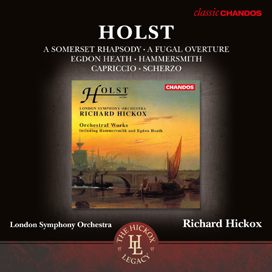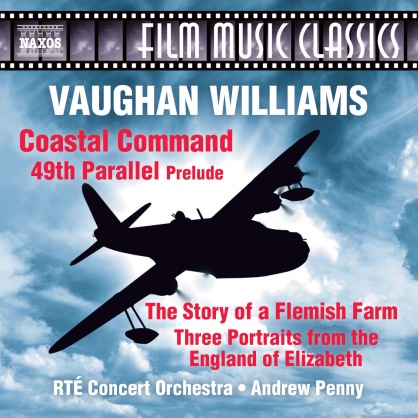Hasse: Classical Jazz
September 30, 2016

| DISC: 1 | |||
|---|---|---|---|
| 1 | Night Music (after F. Chopin’s Nocturne No. 6 in G | 00:04:02 | Haase, Gary New York Ensemble, The |
| 2 | Pyotr’s Piano Concerto (after P. Tchaikovsky’s Pia | 00:03:32 | Haase, Gary New York Ensemble, The |
| 3 | A Bit of Brahms (after J. Brahms Symphony No. 3 in | 00:04:02 | Haase, Gary New York Ensemble, The |
| 4 | Maurice’s Pavane (after M. Ravel’s Pavane pour une | 00:04:45 | Haase, Gary New York Ensemble, The |
| 5 | Gabey’s Pavane (after G. Faure’s Pavane, Op. 50) | 00:04:15 | Haase, Gary New York Ensemble, The |
| 6 | Freddie Goes to Church (after F. Chopin’s 12 Etude | 00:05:31 | Haase, Gary New York Ensemble, The |
| 7 | Feelin’ Pretty (after L. Bernstein’s I Feel Pretty | 00:03:14 | Haase, Gary New York Ensemble, The |
| 8 | Seriously Pathetique (after L. van Beethoven’s Pia | 00:05:05 | Haase, Gary New York Ensemble, The |
| 9 | Paradise Is Strange (after A. Borodin’s Prince Igo | 00:04:04 | Haase, Gary |
| 10 | Yes, It’s Magic (after F. Chopin’s 24 Preludes, Op | 00:03:42 | Haase, Gary |
| 11 | In the Beginning (after F. Chopin’s 24 Preludes, O | 00:04:40 | Haase, Gary New York Ensemble, The |
| 12 | Basically Bach (after J.S. Bach’s BWV 1068: II. Ai | 00:03:33 | Haase, Gary New York Ensemble, The |
When I spun this platter and began to listen to it along with reading the liner notes I immediately wanted to classify this release as a ‘crossover’ that loosely took classical melodies and gave them a jazzy feel and sound. After listening to it for a second time I came to the conclusion that this was not a ‘crossover’ but a concept that has been tried before, but this attempt with Gary Haase and The New York Ensemble was different in the arrangements. There sounded like there was little or no improvisation but well written structured arrangements that drift a little but not too far. That hard to understand feeling wasn’t there. It almost leans toward elevator music but there is enough jazz with the chordal changes and harmonic adaptions . I think that some of the melodies chosen such as Bach’s popular melody lend themselves to this style of music.
My two favorite tracks on the CD are Feeling Pretty (L. Bernstein), classical in a very broad sense. Haase provides us with some very nice keyboard work and the brass section definitely enhances the arrangement. The other favorite is Stranger in Paradise from the opera Prince Igor by Borodin. It features from very nice trumpet work with an able backing from harmonic strings. There are also selections from Brahms, Bach, Chopin, Tchaikovsky, and Faure.
Haase has crafted a fine score that the jazz listener will want to have in his collection. He has a good feel for the keyboard. I’m not so sure about the classical listener, although the casual one may find it to their liking.
Holst Orchestral Works
September 22, 2016

CLASSIC CHANDOS SERIES
chandos 10911x
There are many of us who believe that Gustav Holst (1874-1934) was only known for The Planets and nothing else. He was a one and done composer like Dukas and Sorcerers Apprentice, Borodin and his Prince Igor along with many other composers. This is not true and this re-release will show you some of the wonderful music that he has to offer.In this recording Holst wrote about the barren land of Egdon Heath, the business of Hammersmith, a movement of an unfinished symphony, and an overture to an opera.
“Fugal Overture,” written in 1922 was an overture of the opera The Perfect Fool, performed in 1923. Written in a neoclassicism style Holst originally titled this a Fugal Ballet. Holst makes effective use of the glockenspiel giving it a sparkle which changes into an overpowering brass motif. “A Somerset Rhapsody” was written in 1907 and is a trio of folksongs that are eventually combined and performed using different color orchestrations. The three folksongs are “It’s A Rosebud in June” features the oboe which is tranquil and peaceful and transmits love and peace. The middle selection “High Germany” a rousing march filled with a robust brass fanfare which is filled with melody and counterpoint. The transition between the first and the second is flawless and you don’t realize it until you listen for it. The final tune is “The Lovers Farewell followed by the combing of the tunes.
“Scherzo” was the only completed movement of his unfinished Choral Symphony from 1925. After his death it was released and performed in 1935 with Adrian Boult conducting. The liner note writer Lewis Foreman (excellent notes) gave it the title ‘great might-have-beens.’ If your looking for something loud and uplifting this is the track for you. “Egdon Heath” based on the writings of Thomas Hardy in his novel Return of the Native which Hardy was aware of what Holst was doing. Holst used the Hardy words to inspire his writing. “A place perfectly accordant with mans nature-neither ghastly, hateful, nor ugly: neither commonplace, unmeaning, nor tame: but, like man, slighted and enduring: and withal singularly colossal and mysterious in its swarthy monotony.” The theme in a minor key is offered by the brass section which leads us into a section of dissonance and despair. The string section continues the theme primarily in the wind section with harmony from the brass (a forte of Holst). Overall this 16+ minute work is one that will sway your emotions. Well done by Hickox and the London Symphony Orchestra. “Hammersmith” is written for band originally but Holst re-orchestrated it for symphony orchestra and it was conducted by Boult in 1931. The piece is based on the bustle of the city Hammersmith along with the slow flowing motion of the river. A rather dissonant piece with a nice melody I’ve not heard it for concert band but would certainly like to do so The final selection is a piece that Holst was commissioned to write when he was lecturing at Harvard for concert band for a radio concert which never came off. Holst called it his jazz band piece which it was really not. His daughter arranged the lively piece which has now become a standard in his recorded offerings.
Hickox is a master interpreter of Holst and there are other offerings in the vast choices from Naxos and Chandos. He isn’t just about Planets and these 6 offerings are an outstanding example of what he has to offer.
Look forward to 4 new releases in 2017 in the Hickox series including the Double Concerto from Holst, Light of Life from Elgar, The Black Knight from Elgar, and The Bear from Walton. Chandos is truly a major player in the classical world.
Vaughan Williams Film Music
September 17, 2016

NAXOS 8.577850
I’ve always had the greatest fondness for the Naxos film music classics series of some of the films of the 40’s and 50’s including this latest offering of Vaughan Williams film music, something that the average listener was not aware that he wrote quite nicely in this genre. Who better to write about British war dramas than Vaughan Williams? This previously released recording in 1995 on Marco Polo was recorded in Dublin in November of 1993.
Don’t expect to hear a Hollywood type score with lots of brass, a bit of loudness, and memorable marching type themes. This is still Vaughan Williams and a wonderful addition to your collection. If there is a bit of agitation and excitement, it can be found in Coastal Command (1942). It was a documentary depicting real wartime happenings and the leading actors were in fact RAF members. When it was seen in 1944 by the New York Times critic Bosley Crowther, he had little positive to say about it. I on the other hand found it to be an interesting film as I learned from a historical aspect and the highlight for me was the score by Williams.
49th Parallel (1940-1941) has the honor of the most melodic and memorable of the four suites. It is a proud majestic theme that will remain with you for a long time. The longest of the four is The Story of a Flemish Farm (1943) which plays out like a tone poem or orchestral suite which has 7 different movements. For the most part it is well laid back like many British composers and is my favorite of the four works.”The Flag Flutters in the Wind” sets the background for what kind of story this is going be. Majestic theme for the flag is followed by a danger mysterious section and it ends with the the major key melody. “Night By The Sea” continues withe eerie music followed by a short motif “Farewell to the Flag.” “Dawn in the Barn-The Parting of the Lovers” “Dead Man’s Kit” offers a wonderful flute solo backed by the reeds complete with flutterings and an ominous background. “The Wanderings of the Flag” ends the score with proud majestic material worthy of the flag.
Completing the CD is Three Portraits from the England of Elizabeth (1955). The opening track of the three is “Explorers gets us off to arousing start with music that could be the opening of a Korngold scored film with material that is rousing and warms the blood. “Poet” is completely the opposite as you’ll hear music from the court, a dance delicate in nature which conjures up courtly dancing. “Queen” as you can gather from the title is a majestic coronation type track that bestows honor on the queen.
Vaughan Williams had the unique ability to use classical music and whatever situation the film dictated to achieve the correct material. While these are considered more propaganda minor films this is not true of the music. The 67 minute could stand proud and tall with his symphonies. It is well recorded and a treat to have in my collection.